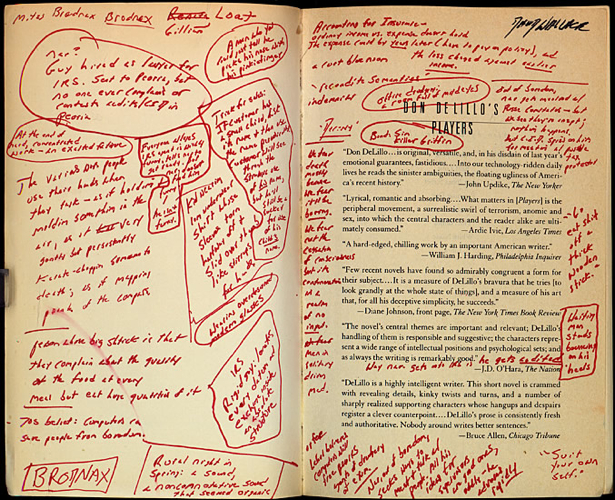E-Reading: A Midterm Progress Report
E-readers have been around long enough now that the novelty has largely worn off. To be sure, we still get the occasional article or blog post celebrating the smell of "real books" and denouncing the disembodied fakery of text on a screen, but not nearly as many as in recent years. E-readers are simply part of the reading landscape now -- the first Kindle was released almost five years ago -- and it's time for a midterm progress report. How is the technology developing? What has been accomplished and what remains to be done?
One good development in the past five years: more options for reading at night. There are backlit LCD reading possibilities via the iPad and subsequent tablets, including the Kindle Fire and the Nexus 7, plus a much less eye-frying option, the e-ink Nook Simple Touch GlowLight. The Kindle software for the iPad and iPhone allows you to dim the screen for that app only, which is helpful -- and I think it's great to be reading as the sky grows darker and not have to get up to turn on a light, remaining focused on the book -- but my eyes just hurt after a long iPad session. I don't know that anything can be done about that.
LCD screens are as glare-prone as ever: though there are some screen protectors that claim to reduce glare, I have yet to find one that has a significant effect, so if you're going to be reading outdoors the e-ink screens are still your best bet. However, it should be noted that all e-ink screens are more reflective than paper, so that some degree of glare management is intrinsic to the e-reading experience, at least for now. Technologies have not changed noticeably in this respect.
E-ink screens today have much better contrast that the earlier ones did. That's a big plus.
E-readers still have limited typeface options and do a generally lousy job of handling kerning and spacing. I've seen little improvement in those areas.
On a matter unrelated to e-reading technologies as such, e-books tend to have far more errors than print books, especially older books that have been scanned using OCR software and carelessly edited (or in some cases not edited at all).
But it seems to me that the most serious deficiencies of e-readers involve readers' interactions with books. In this respect we may be losing ground rather than gaining it. That I even care about this clearly puts me in the minority among readers, as I know from decades of teaching literature: it has always been, and it continues to be, difficult to get students to write in their books in meaningful and useful ways. Many won't write in books at all, and many more will only use a highlighter, which is scarcely any better. That this attitude is common may help explain why extremely long and detailed comparisons of e-readers do not even mention highlighting and annotation features.
If you have a codex book and a pencil, you can interact with it in serious ways -- check you out, David Foster Wallace:

Try that with a Kindle or Nook. It's impossible now, and it's not clear that anyone is interested in making it possible. In fact, newer versions of the Kindle software are making it harder to annotate: the various versions of the Kindle Touch lack a physical keyboard, and invoking and using the virtual one is very slow and profoundly awkward. Moreover, the software for the newer Kindles makes it harder even to highlight: the older software, which is still being used for the Kindle Keyboard assumes that when you click on a word you want to start highlighting, whereas the Touch software assumes that you want to get a definition of the word. (Is that really more likely?) It requires multiple clicks to begin and to end highlighting. So if you do like to highlight passages and comment in your books, you'd be better off with the old-school Kindle Keyboard. (I have only had limited access to Nooks, but as far as I can tell their software makes annotation even more cumbersome.)
Highlighting and commenting are much easier on LCD touchscreens, by and large, though I find that my iPad too often interprets my attempt to start a highlight as an attempt to turn the page -- very annoying -- and it continues to be impossible to extend a highlight across a page break (something that's easily done on a Kindle or Nook). When I am determined to highlight a thought that spans pages, I have to alter the type size until it's all on one page, do my highlighting, and then change back to the type size I prefer. I had these same problems during the brief period I had a Kindle Fire.
Why am I so determined to highlight and comment? Well, it's the kind of reader I am, when I'm not reading for pure fun; but I also love the fact that Amazon records all these annotations and makes them available to me on their website. (Nook annotations are not backed up and are therefore quite vulnerable.) It's really illuminating to scan a single webpage and see every passage I have annotated in a book. It gives me a clearer sense of what I thought important as I was reading; it helps me to piece together the whole of a reading experience.
So, to sum up: for consumerist reading, e-readers have gotten better in some ways while stagnating in others; for engaged, responsive reading, they seem to be generally stagnating, or perhaps even moving backwards. These are technologies that need a kick in the pants. They're not getting better nearly fast enough. And that matters, because they are now essential to millions of readers' lives.